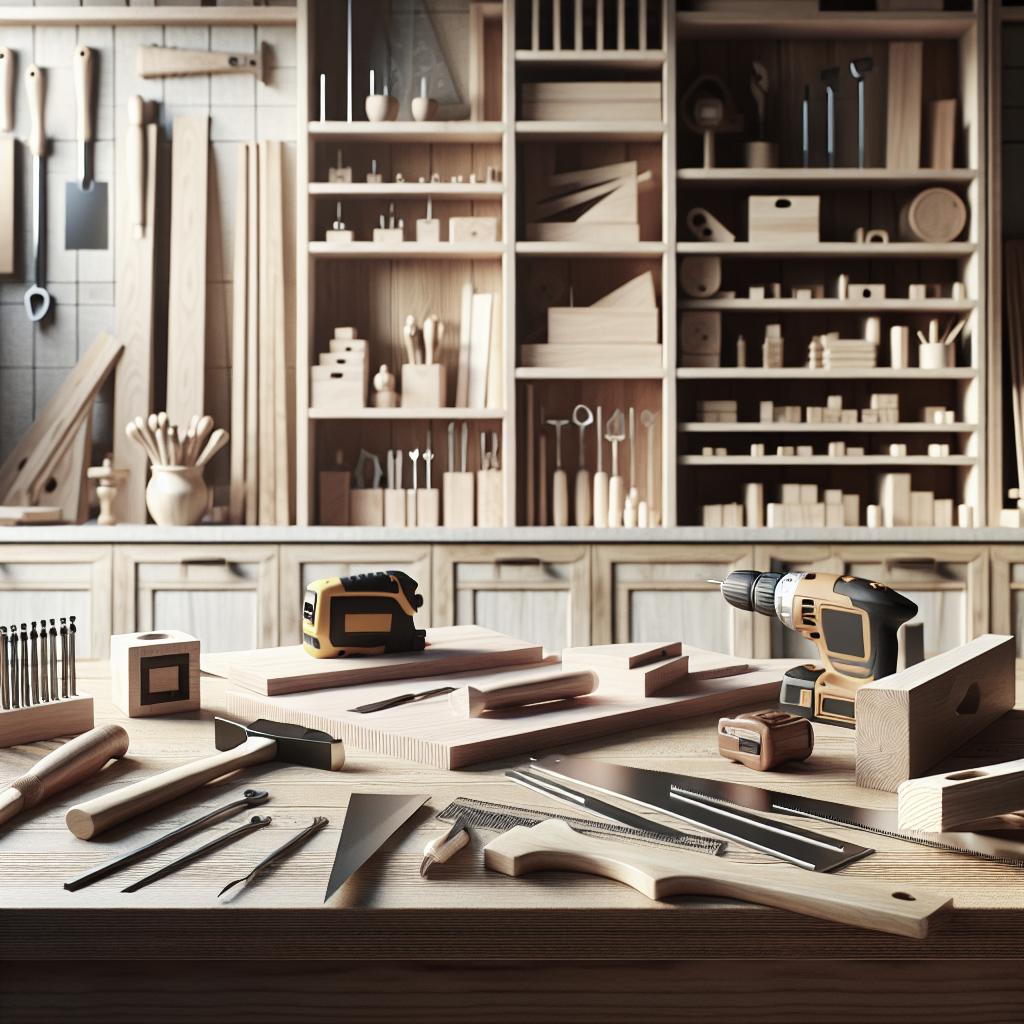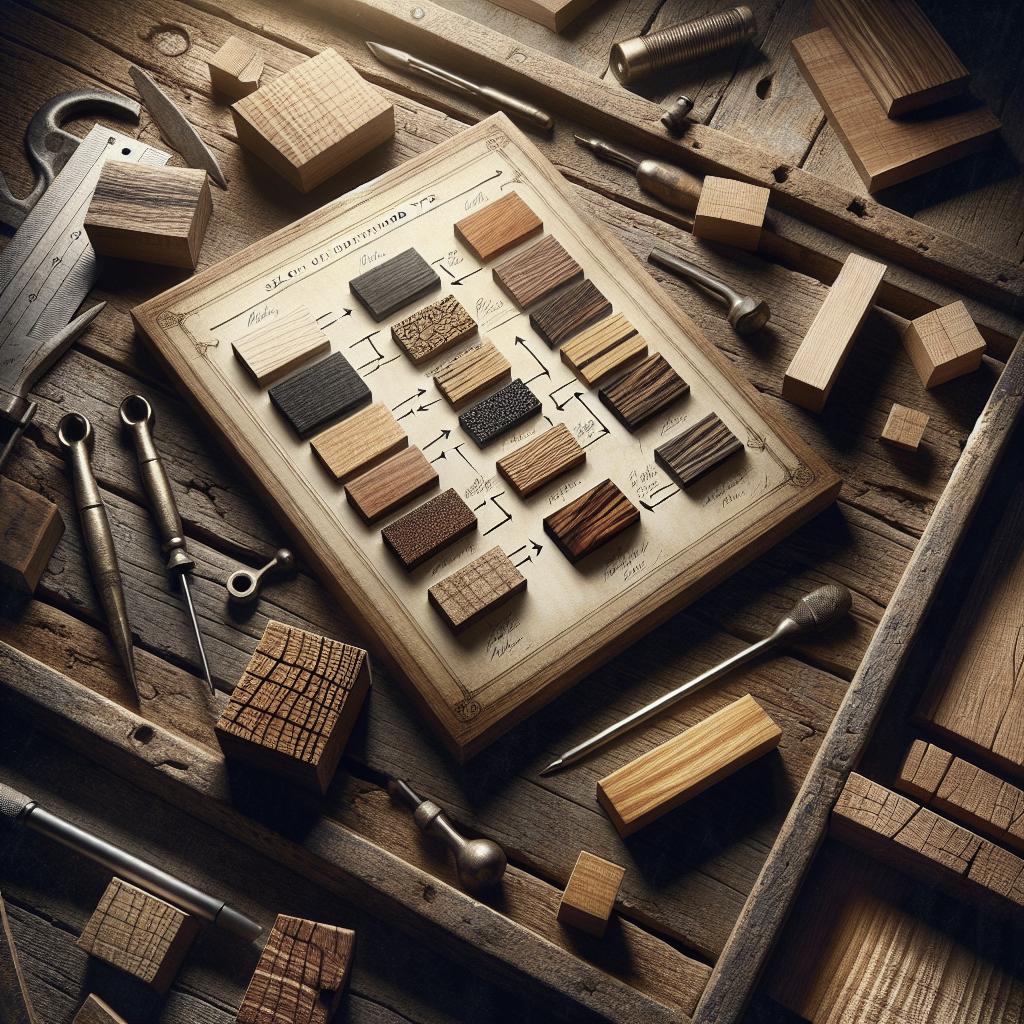“`html
How to Design a Functional and Aesthetic Wooden Chair
Creating the perfect wooden chair is both an art and a science. This article is a gateway for enthusiasts and aspiring woodworkers, exploring the journey of designing a chair that blends functionality with aesthetic appeal. With insights inspired by master craftsman Greg Pennington, each stage of the chair’s development is meticulously detailed. From the overall design concept to the crafting of its curved back, you’ll delve into the nuances of the Windsor Chair with its classical elegance. Additionally, we’ll go through the meticulous process of turning legs, shaping the seat, and assembling the magical symphony of legs and stretchers. Finally, we’ll explore the finishing touches vital for achieving that timeless, polished look. Whether you’re a beginner or a seasoned woodworker, these step-by-step instructions will elevate your craft and appreciation of wooden chair design.
About Greg Pennington
Greg Pennington is a renowned woodworker who has mastered the art of crafting traditional Windsor chairs. His expertise is a beacon for many aspiring craftsmen, due in part to his blend of traditional techniques and innovative designs. Greg’s workshops are not only educational but also inspirational, offering insights that few others can. His passion for woodworking began at an early age, and over the years, he has honed his skills to become a distinguished name in the world of fine furniture.
In Greg’s approach, the emphasis is on creating pieces that are both functional and aesthetically pleasing. He believes that a chair should not only be comfortable to sit in but should also be a reflection of the craftsman’s skill and creativity. His attention to detail and dedication to quality are evident in every piece he creates, making his work highly sought after by clients and collectors alike.
Design
The design phase is pivotal in creating a chair that stands the test of time both in durability and style. In Greg’s methodology, understanding the ergonomics of seating is crucial. A chair should support the body comfortably and enhance its natural posture. Every line and curve should serve both aesthetic and structural purposes.
When designing a wooden chair, selecting the right type of wood is crucial. Beyond aesthetics, wood choice impacts the chair’s strength and durability. Woods like oak and cherry are popular for their robustness and natural beauty. Moreover, the initial sketches and prototypes are vital to visualize the final product, allowing for adjustments before crafting begins.
Curved Back
The curved back is not just a design preference; it is integral for comfort. It cradles the spine naturally, ensuring that long hours in the chair do not lead to discomfort. Designing a curved back involves understanding the human anatomy and how curves can provide support and esthetic value.
Creating the perfect curve is not a task for the faint-hearted; it requires precision and patience. The back spindles must be even, carefully placed, and smoothly finished. This stage of crafting benefits from tools like the curved shave and spokeshave, allowing for smooth finishing and rounded edges, resulting in a chair that beckons users to sit with ease.
Windsor Chair Cut List
The Windsor Chair is a classic and timeless piece of furniture, where each component is meticulously measured and crafted. The cut list comprises various pieces like the legs, stretchers, spindles, and seat. Ensuring these components are cut to precise measurements is essential for the chair to fit together seamlessly.
Greg emphasizes the importance of accuracy in measurement to avoid wastage of material and time. Employing the correct measurements not only provides structural integrity but also ensures the visual harmony of the chair. The cut list serves as a blueprint that guides craftsmen throughout the creation process, making it an indispensable tool in the workshop.
Turning the Legs
Turning is an art form in itself, requiring finesse and an eye for detail. The legs of a Windsor chair are its foundation, and they must not only support the chair but also add to its beauty. When turning the legs, the woodworker must ensure symmetry and consistency, ensuring the final pieces match the design intentions exactly.
Equipment such as the lathe plays an essential role in this process. In Greg’s workshop, each leg is turned with precision, paying close attention to the desired thickness and decorative elements. The process requires patience, as even the smallest deviation can alter the chair’s dimensions and stability.
The Seat
The seat is the heart of any chair, dictating comfort and usability. Crafting the Windsor chair seat involves hollowing it out to cradle the user comfortably. Selecting the right wood for the seat is pivotal, as it needs to be both durable and forgiving enough to be hand-shaped without cracking.
Greg employs the adze and scorp, specialized tools that help in the carving process, allowing for a smooth scoop that conforms to the body. The seat’s smoothness and finish are critical, as this is the part of the chair in direct contact with the user, requiring both comfort and durability over time.
Legs and Stretchers
The union between legs and stretchers is where structural integrity plays a crucial role. Connecting these components in a way that provides strength without compromising on design is an intricate process. Each part must fit snugly, ensuring the chair remains stable over years of use.
Greg uses mortise and tenon joints to connect the legs and stretchers, a technique renowned for its strength. This not only keeps the chair upright but does so while maintaining a seamless look. The method reflects traditional craftsmanship, though some modern alternatives are available, Greg’s preferred technique confirms a timeless, enduring structure.
Back and Spindles
The back and spindles of a wooden chair define its style and reputation. In a Windsor chair, these elements must combine gracefully, providing support and consistency throughout the design. The spindles should be uniform, slender yet robust, to provide support to the sitter.
Attention to the angle and fit for each spindle into the seat and back frame is imperative. Mistakes in this stage can lead to instability and aesthetic imbalance. Greg ensures each spindle is crafted with precision and placed meticulously, echoing a harmony found in classical music, providing both support and visual flow.
Finishing Touches
The finishing touches transform a functional chair into a masterpiece. These include staining and varnishing, processes that protect the wood and enhance its natural beauty. Finding a balance between retaining natural grain patterns and adding protective layers is crucial.
Greg chooses finishes that complement the wood’s inherent colors while offering resilience against wear and tear. Final sanding and varnishing ensure the chair is smooth to the touch and pleasing to the eye. The finishing touches represent the craftsman’s signature, wrapping up the process with finesse and attention to detail.
Future Prospects
| Element | Details |
|---|---|
| About Greg Pennington | Renowned craftsman focusing on quality and aesthetics. |
| Design | Combines ergonomics with wood choice for functionality and style. |
| Curved Back | Focuses on comfort and natural support with precise crafting. |
| Windsor Chair Cut List | Essential measurements for crafting the chair’s parts. |
| Turning the Legs | Uses a lathe to ensure symmetric, decorative legs. |
| The Seat | Hollowed for comfort, emphasizing wood choice and finish. |
| Legs and Stretchers | Utilizes mortise and tenon joints for stability and design. |
| Back and Spindles | Ensures support and aesthetic balance via precise fitting. |
| Finishing Touches | Staining and varnishing for beauty and protection with attention to detail. |
“`


